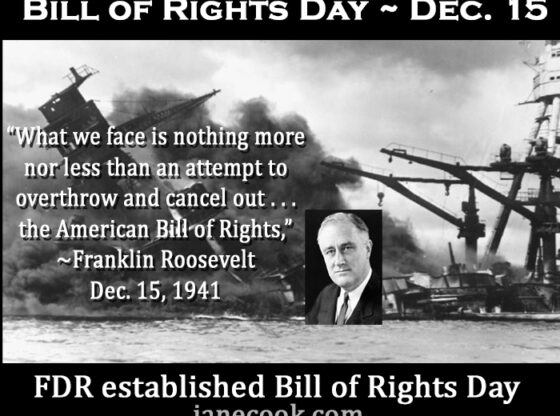While on a train headed to Warm Springs, Georgia, for a late Thanksgiving holiday on 29 November 1941, President Franklin Delano Roosevelt (FDR) called upon the American people to observe December 15 as Bill of Rights Day.
According to this article from the San Diego Union, Roosevelt issued a proclamation for Dec. 15 to be set apart:
“as a day of mobilization for freedom and for human rights, a day of remembrance of the democratic and peaceful action by which these rights were gained, a day of reassessment of their present meaning and their living worth.”
Roosevelt’s presidential proclamation followed an August joint resolution of Congress calling on the president to designate December 15 as Bill of Rights Day. Government buildings were to display the flag and the American people were to observe the day with ceremonies and prayer.
In its article, the San Diego Union made an interesting observation. Roosevelt’s press secretary and appointment secretary both joined the president for his holiday to Warm Springs, which was not a typical practice: “Usually they go along on trips only when something important may develop. “The newspaper noted that there was a chance that Roosevelt’s trip “might be cut short because of the Japanese situation and conditions in the Far East. “At the time, Roosevelt was in communication with Japan’s top diplomat to discuss peace in the Pacific. Roosevelt returned to Washington on December 2 as planned.
Five days later, the Japanese military attacked U.S. ships, aircraft and service personnel at Pearl Harbor in Honolulu, Hawaii. Newspapers across the country blasted the word “infamy” in their headlines. Like their many counterparts in the press, the New Orleans Item reported the president’s speech to Congress after the Japanese surprise attack.


